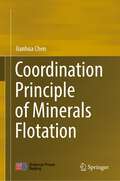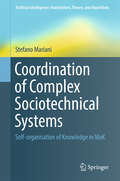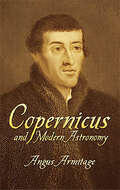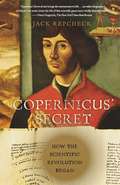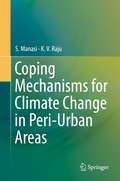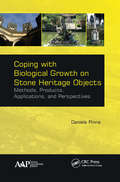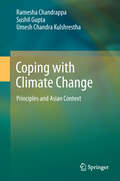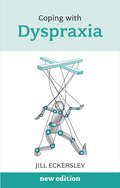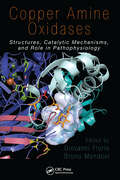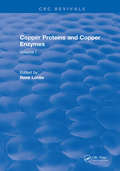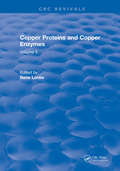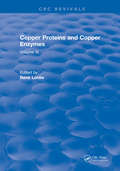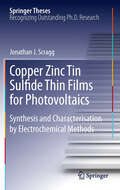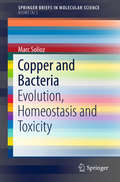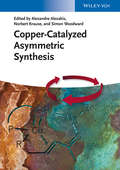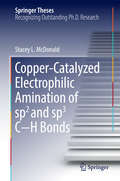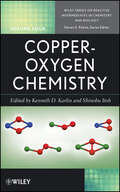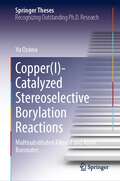- Table View
- List View
Coordination Principle of Minerals Flotation
by Jianhua ChenThe advent of flotation, with selective interaction of reagents with minerals at its core, has greatly advanced the development of modern mining. Ever since, there has been continuous researched into the mechanism of mineral-reagent interactions, in an effort to design and develop more effective reagents. A unique perspective from coordination is presented to illustrate the principles of reagent molecules interacting with metal ions on mineral surface. For the first time, the influence is unveiled of mineral crystal structures and surrounding atoms on metal ion properties and further on mineral-reagent interactions. The introduction of classical theories for modern chemistry, including orbital structure, electron spin and orbital symmetry matching, into flotation is realized. Researchers, engineers and graduate students among others in the field of mineral processing may gain new insight into flotation and the development of novel reagents.
Coordination in Human and Primate Groups
by Thomas Ellwart Peter M. Kappeler Margarete Boos Michaela KolbeCoordination in Human and Primate Groups presents one of the first collections of the different approaches and methods used to assess coordination processes in groups. Written by psychologists and primatologists, the book represents a broad range of coordination research fields such as social psychology, work and organizational psychology, medicine, primatology, and behavioural ecology. It is designed for researchers and practitioners interested in understanding the behavioural aspects of group coordination.
Coordination of Complex Sociotechnical Systems: Self-organisation of Knowledge in MoK (Artificial Intelligence: Foundations, Theory, and Algorithms)
by Stefano MarianiThe book discusses the main issues of coordination in complex sociotechnical systems, covering distributed, self-organising, and pervasive systems. A chemistry-inspired model of coordination, a situated architecture and coordination language, and a cognitive model of interaction are the ingredients of the Molecules of Knowledge (MoK) model for self-organisation of knowledge presented in this book. The MoK technology is discussed, along with some case studies in the fields of collaborative systems, academic research, and citizen journalism. The target audience includes researchers and practitioners in the field of complex software systems engineering. The book is also appropriate for graduate and late undergraduate students in computer science and engineering.
Copernicus and Modern Astronomy
by Angus ArmitageMasterly and authoritative, this book by the foremost scholar on the 16th-century astronomer provides lucid accounts of the development and progress of the Copernican theory as well as a fascinating portrait of the man who clarified the basis for modern cosmology. 41 figures. 6 halftones.
Copernicus' Secret: How the Scientific Revolution Began
by Jack RepcheckThe surprising, little-known story of the scientific revolution that almost didn't happen: how cleric and scientific genius Nicolaus Copernicus's work revolutionized astronomy and altered our understanding of our place in the world.Nicolaus Copernicus gave the world perhaps the most important scientific insight of the modern age, the theory that the earth and the other planets revolve around the sun. He was also the first to proclaim that the earth rotates on its axis once every twenty-four hours. His theory was truly radical: during his lifetime nearly everyone believed that a perfectly still earth rested in the middle of the cosmos, where all the heavenly bodies revolved around it. One of the transcendent geniuses of the early Renaissance, Copernicus was also a flawed and conflicted person. A cleric who lived during the tumultuous years of the early Reformation, he may have been sympathetic to the teachings of the Lutherans. Although he had taken a vow of celibacy, he kept at least one mistress. Supremely confident intellectually, he hesitated to disseminate his work among other scholars. It fact, he kept his astronomical work a secret, revealing it to only a few intimates, and the manuscript containing his revolutionary theory, which he refined for at least twenty years, remained "hidden among my things." It is unlikely that Copernicus' masterwork would ever have been published if not for a young mathematics professor named Georg Joachim Rheticus. He had heard of Copernicus' ideas, and with his imagination on fire he journeyed hundreds of miles to a land where, as a Lutheran, he was forbidden to travel. Rheticus' meeting with Copernicus in a small cathedral town in northern Poland proved to be one of the most important encounters in history. Copernicus' Secret recreates the life and world of the scientific genius whose work revolutionized astronomy and tells the fascinating story behind the dawn of the scientific age.
Coping Mechanisms for Climate Change in Peri-Urban Areas
by S. Manasi K. V. RajuThis book discusses the dynamics and resource management qualities of the peri-urban interface to address climate change consequences, focusing on the peri-urban region of the global city of Bengalaru. In 5 chapters, the authors document the unique challenges experienced in peri-urban areas, including soil-water vegetation dynamics, local and regional impacts on water bodies (surface and groundwater), food production issues, and the inhibited adaptive capacity of local communities. The book also provides knowledge on implementations of environmental management by local institutions, government interventions that have acted as catalysts in promoting community based adaptation strategies, and the physical, social and economic aspects of rural-urban dynamics. The book not only adds to the scarce existing literature on peri-urban contexts, but also addresses the role of culture in protecting ecological landscapes and how traditions play an important role in coping with climate change. Furthermore, the authors expand on these climate change coping mechanisms in peri-urban areas, taking into account local cultural factors and interesting governance interventions in the context of health. The book will be of interest to planners, policy makers, and students and researchers engaged in rural-urban dynamics and climate change adaptation.
Coping with Biological Growth on Stone Heritage Objects: Methods, Products, Applications, and Perspectives
by Daniela PinnaCoping with Biological Growth on Stone Heritage Objects: Methods, Products, Applications, and Perspectives offers hands-on guidance for addressing the specific challenges involved in conserving historical monuments, sculptures, archaeological sites, and caves that have been attacked and colonized by micro- and macroorganisms. The volume provides many case studies of removal of biological growth with practical advice for making the right choices. It presents detailed and updated information related to biocides and to alternative substances, features that will be valuable to dealing with these challenges. The author’s goal is to provide access to information and offer the conceptual framework needed to understand complex issues, so that the reader can comprehend the nature of conservation problems and formulate her/his own views. From bacteria to plants, biological agents pose serious risks to the preservation of cultural heritage. In an effort to save heritage objects, buildings, and sites, conservators’ activities aim to arrest, mitigate, and prevent the damages caused by bacteria, algae, fungi, lichens, plants, and birds. Although much has been learned about these problems, information is scattered across meeting proceedings and assorted journals that often are not available to restorers and conservators. This book fills the gap by providing a comprehensive selection and examination of international papers published in the last fifteen years, focusing on the appropriate methods, techniques, and products that are useful for the prevention and removal of micro- and macroorganisms that grow on artificial and natural stone works of art, including wall paintings. Results on new substances with antimicrobic properties and alternative methods for the control of biological growth are presented as well. The book also emphasize issues on bioreceptivity of stones and the factors influencing biological growth and includes an outline of the various organisms able to develop on stones, a discussion on the bioprotection of stones by biofilms and lichens, a review of the main analytical techniques, and a section on bioremediation. This volume will be a valuable reference for cultural heritage conservators and restorers, scientists, and heritage-site staff involved in conservation and maintenance of buildings, archaeological sites, parks, and caves.
Coping with Choices to Die
by C. G. PradoThis book examines the reactions of the friends and family of those who elect to die due to terminal illness. These surviving spouses, partners, relatives, and friends, in addition to coping with the death of a loved one, must deal with the loved one's decision to die, thus severing the relationship. C. G. Prado examines how reactions to elective death are affected by cultural influences and beliefs, particularly those related to life, death, and the possibility of an afterlife. Understanding the role of these cultural influences on the grieving processes of survivors is a crucial step in allowing them to accept both intellectually and emotionally the finality of elective death and to deal with the decision of their loved one.
Coping with Climate Change: Principles And Asian Context
by Ramesha Chandrappa Sushil Gupta Umesh Chandra KulshresthaThe Environmental and climatic issues varies from continent to continent and is unique to Asia. Understanding the issues does need lot of research and study material which students may not be able to gather due to shortage of time and resources. Hence an effort is made by authors gathering there experience and academic input from renowned universities of world. Climate change is real and coping with it is major concern in coming days. Most of the books written and sold in the past need updating and customizing. The general description of climate change and world will not help the professionals and students. It needs to seen area wise as a professional will work in specific geographic area. Hence an effort is made to collect data from Asia which host most populated countries along with ecological hot spots.
Coping with Dyspraxia
by Jill EckersleyDyspraxia is believed to affect up to 10% of the population, and involves difficulties with physical co-ordination. Children with dyspraxia may find it hard to learn to write, tie shoelaces or join in P.E. lessons. Adults with dyspraxia may find everyday tasks problematic, such as using a tin-opener, having a bath, playing sport or, in some cases, even speaking clearly. This updated edition of Coping with Dyspraxia explains how this condition may affect people, and how to cope with it, at any stage of life.
Coping with Dyspraxia
by Jill EckersleyDyspraxia is believed to affect up to 10% of the population, and involves difficulties with physical co-ordination. Children with dyspraxia may find it hard to learn to write, tie shoelaces or join in P.E. lessons. Adults with dyspraxia may find everyday tasks problematic, such as using a tin-opener, having a bath, playing sport or, in some cases, even speaking clearly. This updated edition of Coping with Dyspraxia explains how this condition may affect people, and how to cope with it, at any stage of life.
Copper Amine Oxidases: Structures, Catalytic Mechanisms and Role in Pathophysiology
by Bruno Mondovi Giovanni FlorisAlthough the amount of research on copper amine oxidases has grown rapidly and substantially in the past decade, the field unfortunately suffers from lack of cohesion and significant confusion surrounds aspects as simple as confirmation of enzyme identities. This book describes the structure of the enzymes, the role of copper, and of the unusual co
Copper Proteins and Copper Enzymes: Volume I
by Rene LontieThese volumes of Copper Proteins and Copper Enzymes are intended to describe the contemporary spectroscopy and other biophysical chemistry now being applied to copper proteins in order to determine the structures of their active sites. Several chapters of the treatise describe the functional understanding which is emerging from the new work. The authors are all major contributors to research progress on copper proteins and the volumes will be found to be definitive and authoritative.
Copper Proteins and Copper Enzymes: Volume II
by Rene LontieThese volumes of Copper Proteins and Copper Enzymes are intended to describe the contemporary spectroscopy and other biophysical chemistry now being applied to copper proteins in order to determine the structures of their active sites. Several chapters of the treatise describe the functional understanding which is emerging from the new work. The authors are all major contributors to research progress on copper proteins and the volumes will be found to be definitive and authoritative.
Copper Proteins and Copper Enzymes: Volume III
by Rene LontieThese volumes of Copper Proteins and Copper Enzymes are intended to describe the contemporary spectroscopy and other biophysical chemistry now being applied to copper proteins in order to determine the structures of their active sites. Several chapters of the treatise describe the functional understanding which is emerging from the new work. The authors are all major contributors to research progress on copper proteins and the volumes will be found to be definitive and authoritative.
Copper Wire Bonding
by Zhaowei Zhong Preeti S Chauhan Anupam Choubey Michael G PechtThis critical volume provides an in-depth presentation of copper wire bonding technologies, processes and equipment, along with the economic benefits and risks. Due to the increasing cost of materials used to make electronic components, the electronics industry has been rapidly moving from high cost gold to significantly lower cost copper as a wire bonding material. However, copper wire bonding has several process and reliability concerns due to its material properties. Copper Wire Bonding book lays out the challenges involved in replacing gold with copper as a wire bond material, and includes the bonding process changes--bond force, electric flame off, current and ultrasonic energy optimization, and bonding tools and equipment changes for first and second bond formation. In addition, the bond-pad metallurgies and the use of bare and palladium-coated copper wires on aluminum are presented, and gold, nickel and palladium surface finishes are discussed. The book also discusses best practices and recommendations on the bond process, bond-pad metallurgies, and appropriate reliability tests for copper wire-bonded electronic components. In summary, this book: Introduces copper wire bonding technologies Presents copper wire bonding processes Discusses copper wire bonding metallurgies Covers recent advancements in copper wire bonding including the bonding process, equipment changes, bond-pad materials and surface finishes Covers the reliability tests and concerns Covers the current implementation of copper wire bonding in the electronics industry Features 120 figures and tables Copper Wire Bonding is an essential reference for industry professionals seeking detailed information on all facets of copper wire bonding technology.
Copper Zinc Tin Sulfide Thin Films for Photovoltaics: Synthesis and Characterisation by Electrochemical Methods (Springer Theses)
by Jonathan J. ScraggJonathan Scragg documents his work on a very promising material suitable for use in solar cells. Copper Zinc Tin Sulfide (CZTS) is a low cost, earth-abundant material suitable for large scale deployment in photovoltaics. Jonathan pioneered and optimized a low cost route to this material involving electroplating of the three metals concerned, followed by rapid thermal processing (RTP) in sulfur vapour. His beautifully detailed RTP studies - combined with techniques such as XRD, EDX and Raman - reveal the complex relationships between composition, processing and photovoltaic performance. This exceptional thesis contributes to the development of clean, sustainable and alternative sources of energy
Copper and Bacteria: Evolution, Homeostasis and Toxicity (SpringerBriefs in Molecular Science)
by Marc SoliozIn the past two decades, great progress has been made in the understanding of copper as a bioelement. The book summarizes the current knowledge of copper toxicity, homeostasis and resistance in bacteria, in which proteins like copper ATPases, copper chaperones and copper-responsive regulators of gene expression play major roles. The author also discusses the metallation of cuproenzymes. The evolution of the use of copper by cells and of copper-homeostatic proteins are is also considered in this Brief.
Copper-Catalyzed Amination of Aryl and Alkenyl Electrophiles
by Scott E. Denmark Engelbert Ciganek Kevin H. Shaughnessy Rebecca B. DeVasherThe metal-catalyzed amination of aryl and alkenyl electrophiles has developed into a widely used methodology for the synthesis of natural products, active pharmaceutical ingredients, agricultural chemicals, and materials for molecular electronics. Copper catalysts promote the coupling of a wide range of nitrogen nucleophiles, including amines, amides, and heteroaromatic nitrogen compounds with aryl and alkenyl halides. The reactivity profile of copper catalysts is complementary to that of palladium catalysts in many cases. Copper catalysts are highly effective with less nucleophilic nitrogen nucleophiles, such as amides and azoles, whereas palladium catalysts are more effective with more nucleophilic amine nucleophiles. Copper is an attractive alternative to palladium due to its significantly lower cost. In addition, high activity palladium catalysts require expensive and often air-sensitive ligands, whereas the modern copper systems use relatively stable and inexpensive diamine or amino acid ligands. Copper-catalyzed C?N coupling reactions are tolerant of a wide range of functional groups and have been applied to the synthesis of a variety of complex natural products. Significant work has also been done to understand the mechanism of these reactions. Current mechanistic understanding of these methodologies is covered in this monograph. The contents of the book are taken from the comprehensive review of the topic in the Organic Reactions series. Optimal experimental conditions for the amination of aryl and alkenyl halides with all classes of nitrogen nucleophiles are presented. Specific experimental procedures from the literature are provided for the major classes of copper-catalyzed C?N coupling reactions. A tabular survey of all examples of Cu-catalyzed arylation and alkenylation of nitrogen nucleophiles is presented in 35 tables organized by nitrogen nucleophile and electrophilic coupling partner. The literature is covered through December 2015 and provides 300 recent citations to supplement the 680 citations of the original hardbound chapter. These latest literature references have been collected in separate sections according to the sequence of the tables in the tabular survey section. In each of the sections, the individual citations have been arranged in alphabetic order of the author names. Copper-Catalyzed Amination of Aryl and Alkenyl Electrophiles is intended to provide organic chemists with an accessible, but detailed, introduction to this important class of transformations.
Copper-Catalyzed Asymmetric Synthesis
by Simon Woodward Norbert Krause Alexandre AlexakisCopper-Catalyzed Asymmetric Synthesis reflects the increasing interest among the chemical synthetic community in the area of asymmetric copper-catalyzed reactions, and introduces readers to the latest, most significant developments in the field.The contents are organized according to reaction type and cover mechanistic and spectroscopic aspects as well as applications in the synthesis of natural products. A whole chapter is devoted to understanding how primary organometallics interact with copper to provide selective catalysts for allylic substitution and conjugate addition, both of which are treated in separate chapters. Another is devoted to the variety of substrates and experimental protocols, while an entire chapter covers the use on non-carbon nucleophiles. Other chapters deal with less-known reactions, such as carbometallation or the additions to imines and related systems, while the more established reactions cyclopropanation and aziridination as well as the use of copper (II) Lewis acids are warranted their own special chapters. Two further chapters concern the processes involved, as determined by mechanistic studies. Finally, a whole chapter is devoted to the synthetic applications.This book is essential reading for researchers at academic institutions and professionals at pharmaceutical or agrochemical companies.
Copper-Catalyzed Electrophilic Amination of sp2 and sp3 C--H Bonds (Springer Theses)
by Stacey L. McdonaldThis thesis reports the latest developments in the direct amination of various C−H bonds using an H−Zn exchange/electrophilic amination strategy. McDonald and co-workers reveal this approach to be a rapid and powerful method for accessing a variety of functionalized amines. The material outlined in this book shows how McDonald achieved C−H zincation using strong, non-nucleophilic zinc bases and subsequent electrophilic amination of the corresponding zinc carbanions with copper as a catalyst and O-benzoylhydroxylamines as the electrophilic nitrogen source. McDonald's findings are of relevance to medicinal chemistry, drug discovery and materials science. Her thesis is a source of inspiration for scientists entering the field and students beginning their PhD in a related area.
Copper-Catalyzed Multi-Component Reactions: Synthesis of Nitrogen-Containing Polycyclic Compounds (Springer Theses)
by Yusuke OhtaA copper-catalyzed direct synthesis of 2-(aminomethyl)indoles by catalytic domino reaction including multi-component coupling was developed, and is the first example of a three-component indole formation without producing salts as a byproduct. Based on this reaction, a copper-catalyzed synthesis of 3-(aminomethyl)isoquinoline was accomplished which represents an unprecedented isoquinoline synthesis through a four-component coupling reaction. Following these results, extensive application studies using one-pot palladium-, acid-, or base-promoted cyclization revealed that indole- or isoquinoline-fused polycyclic compounds can be readily synthesized through multi-component reactions. As the concept of Green Chemistry becomes ever more important, these findings may provide efficient and atom-economical approaches to the diversity-oriented synthesis of bioactive compounds containing a complex structure. This could lead to development of promising drug leads with structural complexity. The work of this thesis will go on to inspire the synthetic research of many readers.
Copper-Mediated Cross-Coupling Reactions
by Gwilherm Evano Nicolas BlanchardProviding comprehensive insight into the use of copper in cross-coupling reactions, Copper-Mediated Cross-Coupling Reactions provides a complete up-to-date collection of the available reactions and catalytic systems for the formation of carbon-heteroatom and carbon-carbon bonds. This essential reference covers a broad scope of copper-mediated reactions, their variations, key advances, improvements, and an array of academic and industrial applications that have revolutionized the field of organic synthesis. The text also discusses the mechanism of these transformations, the use of copper as cost-efficient alternative to palladium, as well as recently developed methods for conducting copper-mediated reactions with supported catalysts.
Copper-Oxygen Chemistry (Wiley Series of Reactive Intermediates in Chemistry and Biology #8)
by Kenneth D. Karlin Shinobu ItohCovers the vastly expanding subject of oxidative processes mediated by copper ions within biological systems Copper-mediated biological oxidations offer a broad range of fundamentally important and potentially practical chemical processes that cross many chemical and pharmaceutical disciplines. This newest volume in the Wiley Series on Reactive Intermediates in Chemistry and Biology is divided into three logical areas within the topic of copper/oxygen chemistry— biological systems, theory, and bioinorganic models and applications—to explore the biosphere for its highly evolved and thus efficient oxidative transformations in the discovery of new types of interactions between molecular oxygen and copper ion. Featuring a diverse collection of subject matter unified in one complete and comprehensive resource, Copper-Oxygen Chemistry probes the fundamental aspects of copper coordination chemistry, synthetic organic chemistry, and biological chemistry to reveal both the biological and chemical aspects driving the current exciting research efforts behind copper-oxygen chemistry. In addition, Copper-Oxygen Chemistry: Addresses the significantly increasing literature on oxygen-atom insertion and carbon-carbon bond-forming reactions as well as enantioselective oxidation chemistries Progresses from biological systems to spectroscopy and theory, and onward to bioinorganic models and applications Covers a wide array of reaction types such as insertion and dehydrogenation reactions that utilize the cheap, abundant, and energy-containing O2 molecule With thorough coverage by prominent authors and researchers shaping innovations in this growing field, this valuable reference is essential reading for bioinorganic chemists, as well as organic, synthetic, and pharmaceutical chemists in academia and industry.
Copper: Multisubstituted Alkenyl and Allylic Boronates (Springer Theses)
by Yu OzawaThis book focuses on the development of novel functionalized organoboron compounds and those synthetic methods. High degrees of chemo-, regio-, and stereoselectivities of the borylation reactions are attained through catalyst design and optimization. Furthermore, the selectivity-determining mechanisms are analyzed with state-of-the-art DFT and other computational methods. In this book, the author synthesizes some multi-substituted alkenyl and allylic boronates via borylation reactions using a copper(I)/diboron catalyst system. Those compounds contain novel densely substituted and distorted structures, which have not been accessed by other methods. The high stereoselectivities are achieved by the optimization of the catalyst, especially the ligand. Some new ligands are also developed in this book. Furthermore, the derivatization of the borylation products is demonstrated to access the sterically demanding complex molecules. Also, the author performs computational analysis to reveal how the catalyst controls the selectivities. The deep insight into the reaction mechanism provides guides for rational catalyst design for not only copper(I) catalysis but also other transition metal catalysis. Thus, the content should be of interest to academic and industrial scientists in a wide range of areas.
